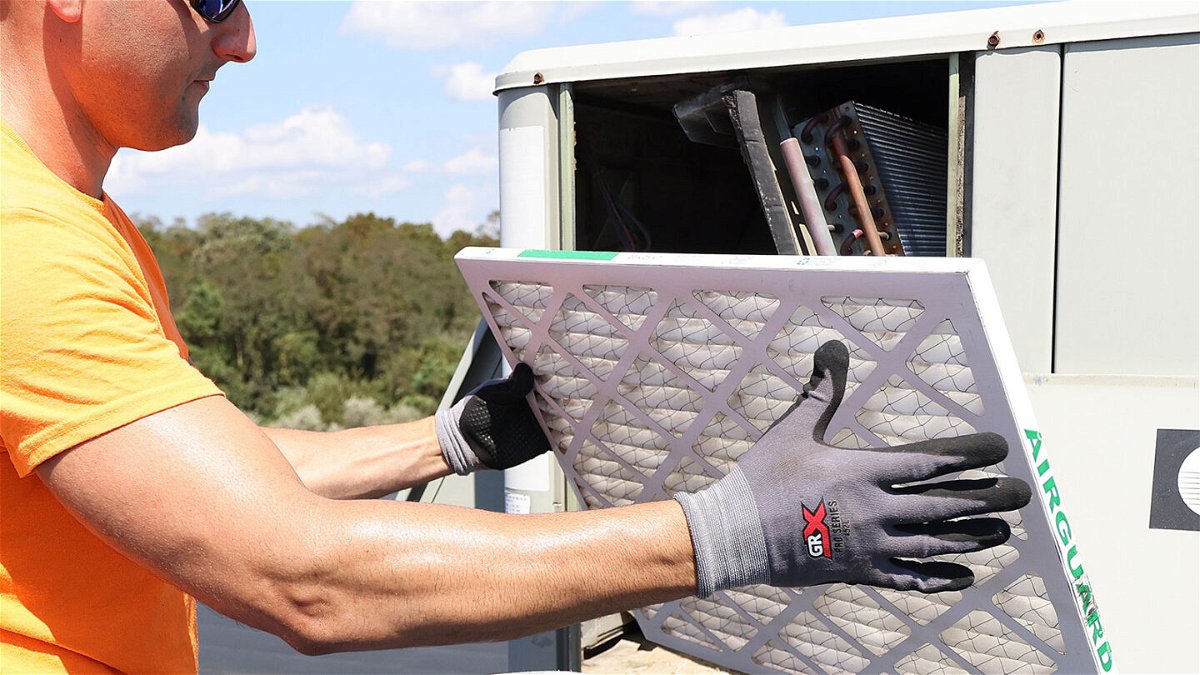CDC sets first target for indoor air ventilation to prevent spread of Covid-19

The CDC recommends using MERV-13 air filters in HVAC systems
by Brenda Goodman
The US Centers for Disease Control and Prevention has extensively updated its ventilation guidance on helping prevent indoor transmission of the virus that causes Covid-19.
The agency had advised people to ventilate indoor air before, but this is the first time a federal agency has set a target — five air changes per hour — for how much rooms and buildings should be ventilated.
Air quality experts cheered the updated recommendations.
“It’s a monumental shift. We haven’t had this. We haven’t had health-based ventilation standards,” said Joseph Allen, director of the Harvard Healthy Buildings Program.
Allen says that although it’s easy to see the guidance only in the context of Covid-19, it will help with many other airborne hazards like wildfire smoke, allergens and other infectious diseases, such as the flu.
The move comes the day after the US ended its public health emergency for Covid-19. Public health officials have long downplayed the role of airborne spread in the transmission of infectious disease, and it took years of lobbying by indoor air quality experts for the CDC to acknowledge the importance of ventilation in controlling the pandemic.
“I am pleasantly surprised to see CDC add this guidance. I do find it ironic that they finally published ways to end the pandemic at the same time as declaring it is over,” said Kimberly Prather, an atmospheric chemist at the University of California at San Diego and the Scripps Institution of Oceanography.
In May 2020, Prather and her coauthors published a perspective article in the journal Science, explaining the airborne spread of Covid-19. Later that year, she and more than 200 other scientists penned a letter to the World Health Organization and other public health authorities asking them to acknowledge and develop guidance to stop airborne spread.
“If they had broadcast and implemented these changes at the beginning, there never would have been a pandemic,” Prather said.
The new CDC guidance was developed in conjunction with a new standard from the American Society of Heating Refrigeration and Air Conditioning Engineers.
The CDC says better indoor ventilation can reduce the concentration of viral particles in the air, lowering the risk that a person would breathe them in and get sick. Improved ventilation can also lower the amount of virus person might inhale, potentially lowering their infectious dose, which could play a role in the severity of their infection.
The new guidance offers detailed recommendations for how to make indoor air healthier. Some of the strategies are as simple as opening a window to let in more outdoor air and using fans to increase the effectiveness of open windows.
In addition to better air circulation, the CDC recommends cleaning indoor air, using MERV-13 air filters in your HVAC system if possible. Air cleaners or purifiers may be helpful if they use high-efficiency particulate air (HEPA). The CDC says these are most important in high-risk areas like schools and medical offices. Systems that use UV light to kill germs may also be helpful.
As for how much ventilation is enough, the CDC suggests at least five air changes per hour to reduce germs. That’s the equivalent of what a portable air cleaner provides as long as it’s properly sized for the space it’s used in, the CDC says.
Ventilation and air cleaning strategies together can help meet the target.
The-CNN-Wire
™ & © 2023 Cable News Network, Inc., a Warner Bros. Discovery Company. All rights reserved.
